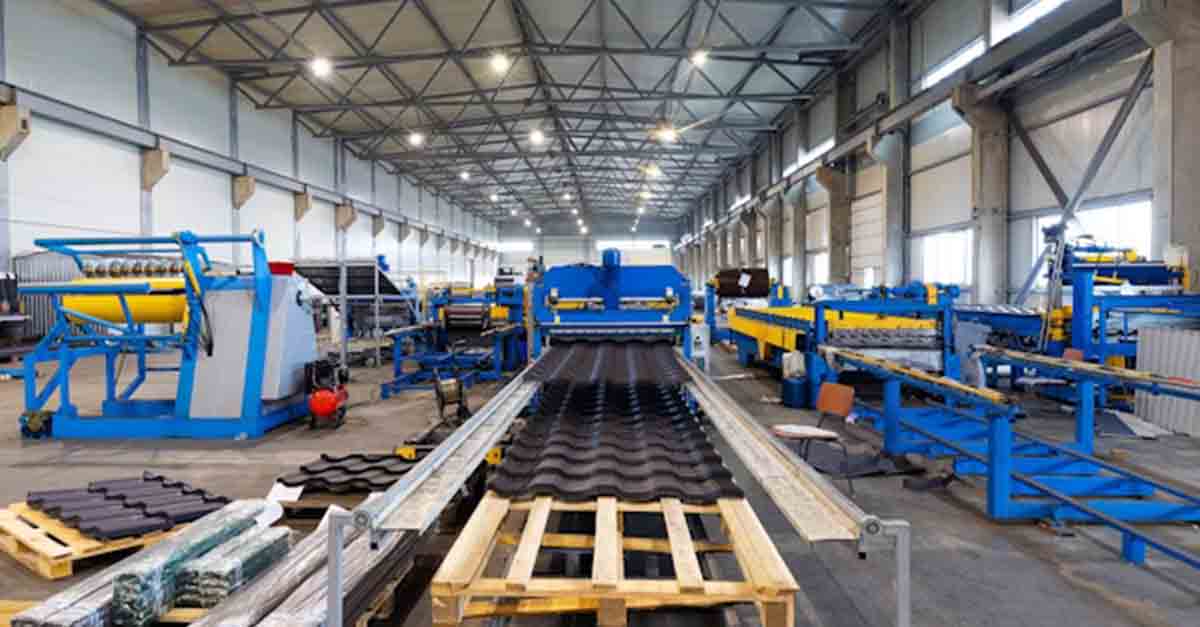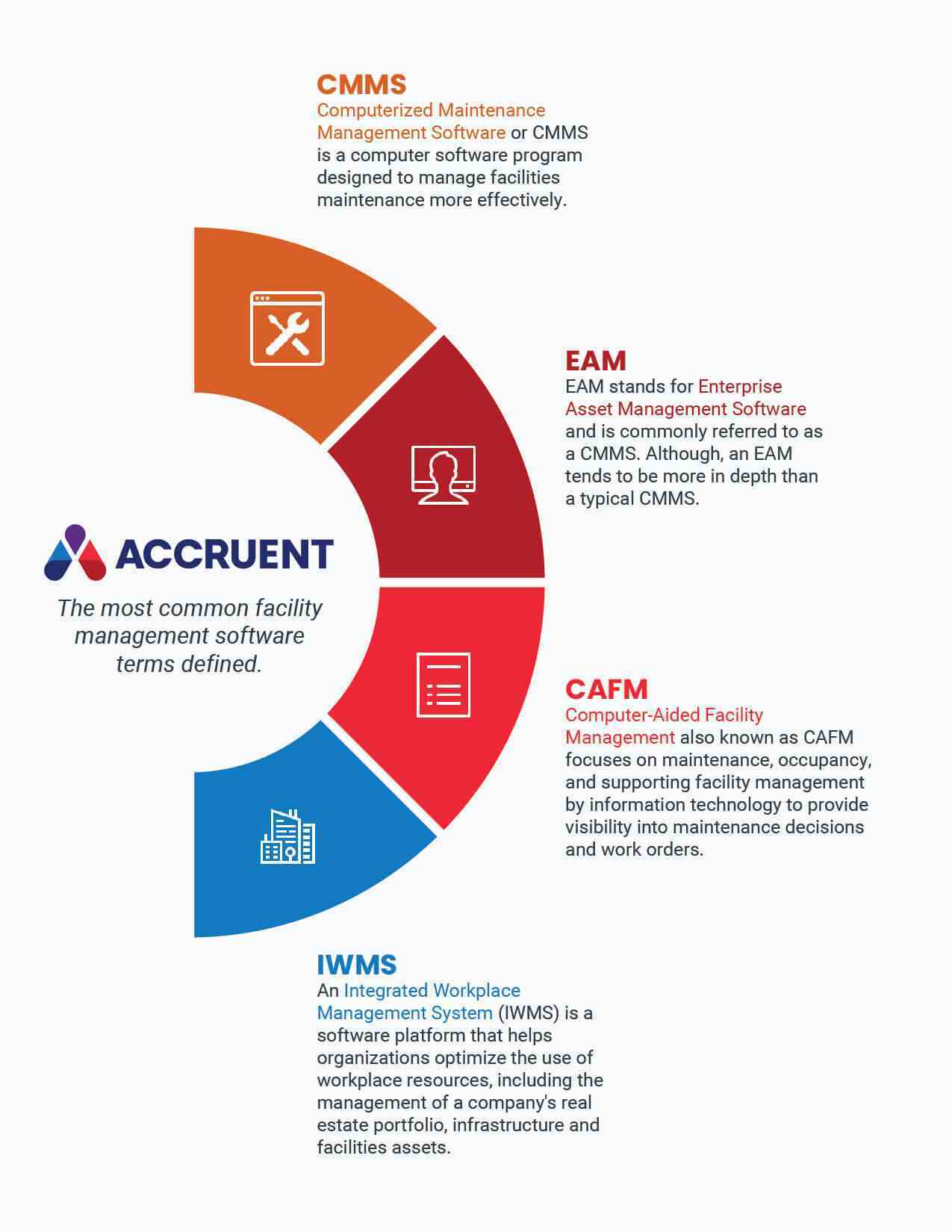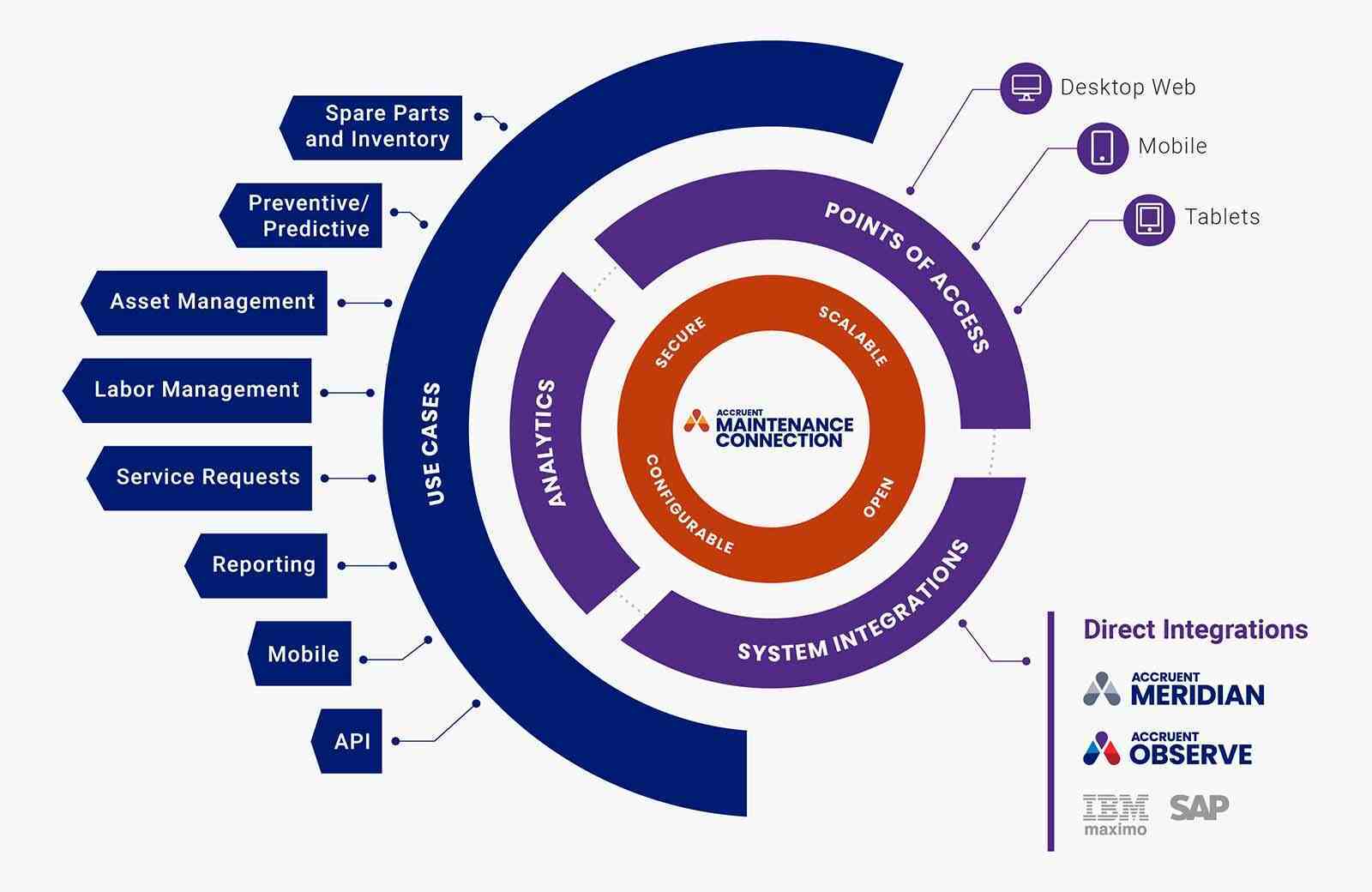
What is EAM?
Discover the power of Enterprise Asset Management (EAM) in optimizing maintenance processes, enhancing efficiency, and reducing downtime. Learn more ...
Solutions
Workplace Management Solutions
Real Estate Management Solutions
Maintenance Management Solutions
Energy Management Solutions
Engineering Document Management Solutions
Asset Management Solutions
Automate campus scheduling for classes, meetings, and exams with our EMS software.
Plan and manage conferences effortlessly with EMS software to impress guests and streamline operations.
Boost workplace flexibility and maximize space use with seamless desk and room booking.
Organize workplace or campus events smoothly, creating memorable experiences.
Optimize workspace, manage allocations efficiently, and reduce costs with our space management solutions.
Deliver projects on time and within budget by improving communication, collaboration, and efficiency with our software.
Streamline lease accounting for ASC 842, IFRS, and GASB compliance.
Manage leases efficiently by tracking key dates, analyzing costs, and ensuring compliance.
Centralize data and analytics for better insights, faster negotiations, and revenue growth.
Centralize facility and asset maintenance, automate work orders, and ensure compliance with our CMMS software.
Extend asset life, reduce downtime, and prevent costly repairs with data-driven monitoring.
Prevent equipment failures and extend asset life by detecting and addressing issues early.
Make sustainable, cost-efficient energy decisions by monitoring and optimizing power consumption.
Remotely monitor and control equipment with real-time data to predict issues, boost efficiency, and reduce downtime.
Easily share and collaborate on documents, creating a single source of truth for engineers and contractors.
Manage and analyze assets across their lifecycle to schedule maintenance, reduce downtime, and extend lifespan.
Improve visibility, automate work orders, and ensure compliance for efficient facility and asset management.
Resources
Browse our full library of resources all in one place, including webinars, whitepapers, podcast episodes, and more.
Support
Looking for access to technical support, best practices, helpful videos, or training tools? You’ve come to the right place.
About Accruent
Get the latest information on Accruent, our solutions, events, and the company at large.

EAM, or enterprise asset management, is the process of tracking, managing, and analyzing asset performance and costs through the whole asset lifecycle to maximize asset life, reduce costs, optimize operations and more.
Enterprise Asset Management (EAM) refers to a suite of tools, practices and software - including EAM software -- that allows organizations to execute effective facility management. With a comprehensive EAM process in place, organizations can effectively maintain, control and analyze their physical assets and infrastructure during all phases of the asset lifecycle management, including acquisition, maintenance and disposal.
Though often compared to a computerized maintenance management system (CMMS) , a robust EAM generally offers a wider range of capabilities and features, including:
This broad suite of capabilities gives asset managers full transparency into the historical and present state of assets so they can optimize asset quality and utilization, improve uptime, reduce operational costs and ultimately increase revenue and ROI.

The right EAM can help your organization track, manage, analyze and optimize your assets through all stages of the asset lifecycle, from acquisition to disposal. This can lead to marked improvements in transparency and preventive maintenance capabilities, which translates to saved time, increased efficiency and lower costs. An EAM can also help your organization:
Having the necessary parts on hand when they are needed is critical to having an efficient maintenance process.
In many organizations, quickly locating parts can also be a challenge. Barcode scanning and inventory tracking capabilities within an EAM can make finding parts much easier and translate to faster repair times and higher labor efficiency.
An EAM can also provide valuable insight into parts utilization and costs. This makes it easier to see actual spend on individual parts and improve part sourcing to reduce inventory costs.
An EAM also offers capabilities like automated inventory control that streamlines the inventory process. Finally, with an EAM, organizations have the option to manage inventory on an enterprise-wide basis. If two sites are physically close to one another and have similar equipment, for example, there are potential opportunities to reduce inventory by sharing stock across sites.
The historical data, real-time data and analytical tools in an EAM can allow you to extend the availability, reliability and usability of your physical assets, thereby increasing both efficiency and ROI.
You can extend the availability, reliability and usability of your physical assets using the historical and real-time data - along with the analytical and diagnostic tools - in your EAM.
Additionally, you can extend asset lifecycle and better manage your aging assets with more informed and proactive maintenance strategies, thereby decreasing costs and increasing ROI.

Mobile, multi-site capabilities and features - including SaaS or hybrid deployments, smartphone capabilities and the ability to read meters, capture electronic signatures and use bar codes or RFID - can maximize remote capabilities and facilitate social distancing.
When equipment breaks down, asset managers can manually log downtime in the EAM software based on the timestamps on fault codes or work requests. Also, when equipment is marked as non-operational by technicians during repairs and PMs, downtime is automatically tracked by the software. This provides a failsafe in case accurate downtime is not logged manually.
Asset managers can connect their software to financial software like QuickBooks to align their efforts with the organization's financial department. This data-sync streamlines financial audits and helps organizations manage the complete asset lifecycle without requiring financial departments to learn how to navigate the EAM software.
A comprehensive EAM can provide all the information about your organization's physical assets in one single system, including:
This information will be accurate and available to any department, meaning that all relevant personnel can get the information they need to do their job. Maintenance, for example, can use the EAM system to manage work orders and equipment records, while accounting can use it to manage MRO budgets and invoices.
This translates to saved time, increased efficiency and lower costs.
Learn how Bay Area Hospital streamlined compliance, simplified maintenance request management and maximized transparency with an EAM system.
One of the real values of an EAM is that it gives visibility to maintenance performance across the organization to enable benchmarking, best practice sharing and performance management.
Take, for example, two sites with similar equipment. If one site experiences a failure on an extruder every quarter while another location has a once-per-year failure rate on the same extruder, then the company has an opportunity to look at the higher-performing site to see if there are conditions, maintenance procedures, etc. that can be replicated to reduce failures at the lower performing site.
Benchmarks across the enterprise can also be established for downtime, maintenance costs and other key performance measurements. When organizations create and track these metrics, they begin to proactively manage maintenance performance. Over time, this typically drives maintenance improvements across the enterprise.
Using AI-powered remote monitoring and accurate alerts, you can get a more comprehensive understanding of the current and expected state of your assets
With this enhanced asset tracking and traceability, you can also meet increasingly complex safety, environmental, and health requirements and enhance your decision-making.

Both CMMS and EAM tools help organizations move from reactive to preventive maintenance strategies by allowing them to automate maintenance activities, inventory management and work orders.
That said, though the two terms are often used interchangeably, EAMs and CMMS systems are not the same thing.

In short, a CMMS can actually fit under the EAM umbrella and can be considered to be a component of a broader EAM system. CMMS tools focus specifically on maintenance and centralizing information to facilitate and automate maintenance during the operational part of a physical asset's lifecycle.
An EAM solution, on the other hand, includes maintenance management capabilities but considers the total cost of ownership (TCO) for a company's physical assets. It provides a wider range of features to track, manage, and analyze asset performance and costs through the whole asset lifecycle, from acquisition to disposal. This gives asset managers full transparency into the historical and present state of assets so they can report to other departments, optimize asset performance, reduce asset costs, and more.
Along with containing a CMMS component, a robust EAM will also provide an inventory management system, a purchasing management system, a document management system, an accounting system, a project management system, multisite management tools, and performance management tools - all in one centralized software.
In this way, an EAM lets you see the bigger picture so you can make prioritized, data-driven business decisions.
When CMMS and EAM software first appeared, all asset management systems were based on on-premises hardware. Now, there has been a significant shift to the cloud. Cloud-based SaaS solutions offer many benefits that make a SaaS solution ideal for modern asset-heavy businesses, including:
EAM solutions often give both technicians and administrators the structure, data, and communication they need to quickly diagnose problems, assign technicians, schedule work orders, and keep track of upcoming work.
This is achieved using features that:
Ultimately, this can enable you to manage both reactive and preventive maintenance requests for a comprehensive facility and maintenance management solution.
It can also facilitate better resource scheduling and enable faster repair time, thereby improving labor efficiency and reducing both labor and overtime costs.
Your assets can make or break your business' profitability. Without proper asset management, things like unplanned downtime, emergency breakdowns and reactive maintenance policies can shorten asset lifecycle and ultimately cost your business time and money.
A robust EAM can provide you with the asset data and documentation you need to move from reactive maintenance to preventive maintenance, thereby extending asset life, decreasing unplanned downtime, streamlining asset inventory, and more.
Assets and the MRO (maintenance, repair, and operating supply) materials used to maintain them are a part of your supply chain. Your business has to order, use and keep track of countless MRO items to run properly, and your technicians need to access these parts in order to effectively complete repairs.
This can be costly. In many cases, MRO accounts can make up as much as 40% of a business' annual procurement budget. An EAM can help you control costs and better control your supply chain with full oversight of MRO inventory procurement and management.
Enterprise asset management software can help you maintain your team's health and safety by providing straightforward, easily accessible safety requirements for every job, simplifying audits, and reducing safety risks using incident analysis and process change management.
A key component of responsible asset management is managing the assessment, training, and certification of your employees and contractors.
An enterprise asset management software can help with this process by:
It can also help your organization effectively manage labor by allowing you to centrally manage both planned and unplanned work, from initial request through completion.
When it comes to service contracts, you have a lot to monitor - including compliance and spending - at every step of the contract lifecycle.
An EAM can help you create and manage your contracts with customers, vendors, partners, and employees so you can better contain costs, mitigate risks, remain compliant, and maximize your ROI.
Properly managing your finances and decreasing unnecessary spending can be difficult if you do not have a single source of truth from which you can gather data and get a comprehensive look at your financial information.
An EAM system cuts costs by streamlining maintenance processes:
This, in turn, reduces the number of emergency repairs and staffing inefficiencies, both of which can take a huge financial toll on your business. A robust EAM can also integrate seamlessly with your finance software to help you manage your accounting and project spending.
If you cannot effectively collect, analyze, access, and apply your equipment data, your operations will be inefficient and under-productive. EAM software can help you extract meaningful data to pinpoint preventive maintenance needs and manage KPIs:
This kind of advanced analytics can help you gain the operational insights you need to automate your processes and spot issues before they become bigger problems. That way, you can save money and make better business decisions.
Top-tier enterprise asset management software can help give you peace of mind when it comes to the health and safety of your team by:
Beyond providing system access to vendors, facility management software solutions also enable vendor management, which includes tracking key information like certificates of insurance (COIs) and activity history.
They may also include functionality to create a rating system, allowing stakeholders to complete performance surveys to develop a preferred vendor list.
One of the main benefits of a facility management software solution is having a centralized database or a single source of truth for all information related to your facilities operations.
This enables the entire team to access essential information about assets and facility processes through documentation and knowledge management within the EAM. This improves the quality of work from your team while simultaneously improving their efficiency in the process.

Effective maintenance is key across a wide range of industries, including:
An EAM software can help with five primary use cases across these industries: facility maintenance, fleet maintenance, production & manufacturing maintenance, linear asset maintenance, and field services.
Discover the power of Enterprise Asset Management (EAM) in optimizing maintenance processes, enhancing efficiency, and reducing downtime. Learn more ...
Discover the power of asset management software: streamline operations, track assets, and optimize maintenance with our comprehensive guide.
Compare the best asset management software by features, ratings and pricing to find the right tool for your organization’s needs.
Subscribe to stay up to date with our latest news, resources and best practices